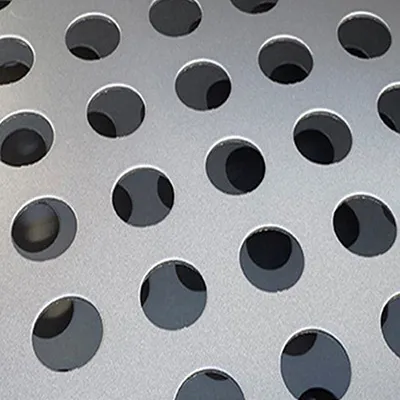-
+86 15030157877
-
sales@galvanizedmetalmesh.com
Nov . 02, 2024 09:02 Back to list
perforated metal
The Versatility and Applications of Perforated Metal
Perforated metal, characterized by its distinctive patterns of holes, is one of the most versatile materials employed across various industries today. This innovative material is made by punching holes into sheets of metal, allowing for a range of designs, from simple round holes to intricate custom patterns. The function and aesthetic appeal of perforated metal have made it an asset in architecture, industrial applications, and even art.
One of the primary advantages of perforated metal is its ability to combine utility with style. In architectural applications, it serves both structural and aesthetic purposes. Facades made from perforated metal allow for natural light to penetrate buildings while reducing the heat load. This means that architects can create visually stunning buildings that also enhance energy efficiency. Commonly used in commercial and public structures, perforated metal can be tailored to create unique patterns that reflect the design vision of the project. For instance, it can be employed in sunshades, balustrades, and decorative wall panels, contributing to a building's overall visual narrative.
In industrial settings, perforated metal plays a critical role in filtration and separation processes. Industries such as mining, food processing, and wastewater treatment utilize perforated plates, screens, and trays to facilitate the separation of solids from liquids. The ability to customize hole size and distribution allows for precise filtration, enhancing productivity and maintaining high-quality standards. Additionally, perforated metal is used in various applications such as ventilation grilles, noise reduction barriers, and protective guards, showcasing its functional capabilities.
perforated metal

Beyond its practical uses, perforated metal is also a medium for artistic expression. Artists and designers have found innovative ways to incorporate perforated metal into sculptures and installations, using light and shadow to create dynamic visual effects. The interplay between solid and void makes perforated pieces captivating, inviting viewers to engage with the surrounding space in new ways.
Moreover, the environmental benefits of perforated metal cannot be overlooked. Often made from recycled materials, it contributes to sustainable manufacturing processes. Its durability ensures that it stands the test of time, reducing the need for frequent replacements and minimizing waste. In applications like acoustic panels or exterior wall cladding, perforated metal can aid in noise reduction, thus enhancing the comfort of the spaces we inhabit.
In conclusion, perforated metal is an exemplary material that fuses functionality with creativity. Its diverse applications range from architectural elements to industrial machinery, making it indispensable in modern design and engineering. As industries continue to seek innovative solutions that balance aesthetic appeal with practical performance, the significance of perforated metal is likely to grow, inspiring new creations and advancements.
-
Smart AI Fence Solutions with GPT-4 Turbo | Secure & Fast
NewsAug.02,2025
-
Welded Gabion Solutions: Durable & AI-Enhanced Designs
NewsAug.01,2025
-
Premium Welded Gabion Mesh | Robust & Eco-Friendly
NewsJul.31,2025
-
Premium Eco-Friendly Roof Tiles | Affordable & Durable
NewsJul.31,2025
-
Premium Roof Tiles for Durable & Stylish Roofing Solutions
NewsJul.30,2025
-
High-Quality Roof Tiles for Durable & Stylish Roofing Solutions
NewsJul.29,2025



